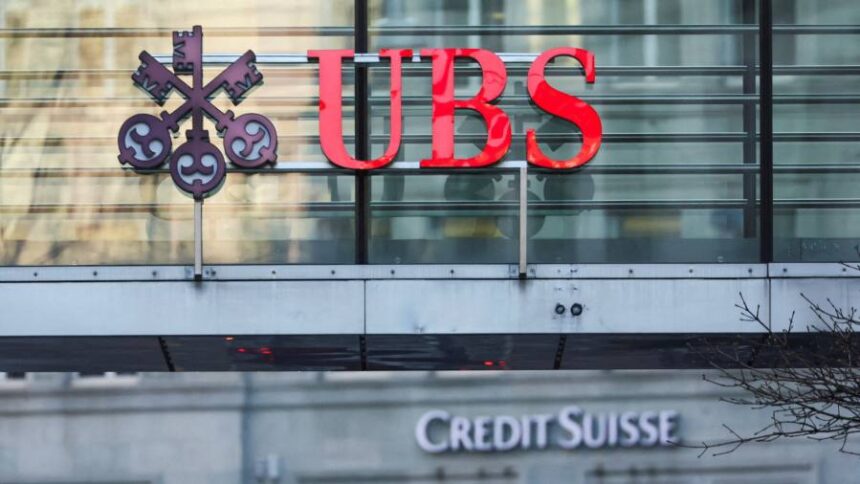Receive free UBS Group AG updates
We’ll send you a myFT Daily Digest email rounding up the latest UBS Group AG news every morning.
UBS has said it no longer needs a SFr9bn ($10.3bn) backstop from the Swiss government that was designed to shield the bank from losses following its rescue of Credit Suisse, in a move that may ease public anger over the deal.
As part of the takeover, the Swiss government agreed to protect UBS from up to SFr9bn in any losses from the takeover, as long as the bank bore SFr5bn.
UBS has also terminated a SFr100bn liquidity lifeline offered by the Swiss National Bank at the height of the turmoil that swept the banking sector in the spring and culminated in the Credit Suisse takeover.
Since authorities orchestrated the rescue over a weekend in late March, UBS executives have grown far more confident that losses from winding down large parts of Credit Suisse’s investment bank will be kept below SFr5bn.
UBS on Friday said that after reviewing all the Credit Suisse assets covered by the backstop, it concluded the agreement was no longer necessary.
The potential scale of support required from Swiss taxpayers for the shotgun marriage of the country’s two biggest banks has proved politically explosive and continues to draw criticism in the run-up to national elections in October.
“UBS made this decision on its own. But this termination is absolutely in the interest of the [Swiss] Confederation,” said finance minister Karin Keller-Sutter at a press conference in Bern. “I didn’t like making this deal, but it was a bitter pill we had to swallow.”
Last month, the Financial Times reported that senior figures at UBS were planning to make clear they would not need to rely on state support for the deal after the threat that the March turmoil would deepen into a financial crisis receded.
The tie-up between the rivals has sparked concern in Switzerland over the potential for large-scale job cuts and branch closures, as well as the risk that a much larger bank would pose to the country’s financial stability.
UBS is expected to announce its decision over whether it will retain or spin off Credit Suisse’s domestic business at its second-quarter results on August 31.
Vontobel analyst Andreas Venditti said the decision to terminate the agreement was designed “to calm down the political debate around the potential ‘danger’ of new UBS for Switzerland”.
While the decision to end the loss protection agreement and liquidity measures would save UBS maintenance fees, the move also provided reassurance to investors that the deal would pay off for the bank, according to Andrew Coombs, an analyst at Citi.
Shares in UBS climbed 4.3 per cent on Friday following the news.
It could also help UBS in negotiations [with the government] over keeping the Credit Suisse’s domestic business, Coombs added.
Keller-Sutter said that the government had engaged in intensive discussions in recent days with UBS over the ending of the backstop, which she said had also incurred reputational risks in accepting the support.
“I assume that UBS decision makers are not living on the moon,” she added, when asked whether UBS is now even more of a regulatory burden after swallowing Credit Suisse.
UBS also announced that Credit Suisse had paid back a SFr50bn emergency loan to the SNB it had received to bolster its liquidity in the days running up to its rescue.
In total, the three support measures cost UBS and Credit Suisse SFr730mn in set-up fees and risk premiums, with the government netting SFr200mn.
In a memo to staff on Friday, UBS chief executive Sergio Ermotti and chair Colm Kelleher said that the termination of the measures was an “important milestone in our historic combination”.
“We feel confident we can manage the overall costs and financial impact of the integration on our own,” they added.
UBS has already begun the process of killing off Credit Suisse’s international brand — replacing signage at the stricken bank’s New York headquarters — although similar moves in Switzerland will be determined by whether it keeps the domestic business.








